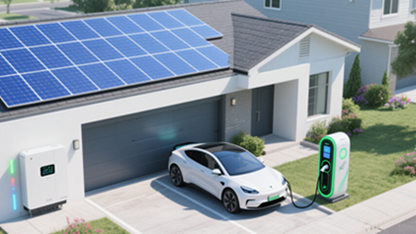What are the factors that determine how much current flows in a circuit?
The amount of current flowing in a circuit is primarily determined by several factors:
1. Voltage
Power Source: The voltage provided in the circuit is the main driving force of current flow. According to Ohm's Law I=V/R current I is directly proportional to voltageV. This means that the higher the voltage, the larger the current in the circuit (assuming the resistance remains constant).
2. Resistance
Circuit Elements: Resistive elements in the circuit (such as resistors, bulbs, motors, etc.) affect the size of the current. The higher the resistance, the smaller the current; the lower the resistance, the larger the current.
Temperature Effects: The resistance of certain materials can vary with temperature changes, thus affecting the size of the current.
3. Circuit Configuration
Series: In a series circuit, all components share the same current. The total resistance is equal to the sum of the individual resistances.
Parallel: In a parallel circuit, the total current is equal to the sum of the currents in each branch, while the voltage across each branch is the same.
4. Type of Power Source
Direct Current (DC) Power Sources: Such as batteries or DC generators, which provide a constant voltage and unidirectional current.
Alternating Current (AC) Power Sources: Such as grid electricity, where the direction of the current changes over time, usually in the form of a sine wave.
5. Capacitance and Inductance
Capacitors: In AC circuits, capacitors can impede the flow of current, known as capacitive reactance.
Inductors: Similarly, in AC circuits, inductors can hinder the change in current, known as inductive reactance.
6. Switch State
Closed: When a switch is closed, it forms a loop in the circuit, allowing current to flow.
Open: When a switch is open, the circuit is interrupted, and the current stops.
7. Environmental Factors
Temperature: The resistance of certain circuit elements may be affected by temperature.
Humidity : High humidity can lead to a decrease in the performance of insulators in the circuit, thus affecting the current.
8. Circuit Design
Load (Load): The load in the circuit consumes current, and differences in the load can affect the size of the current.
Protection Devices: Such as fuses or circuit breakers, which are used to limit the current to prevent overload or short circuits.
Summary
The current in a circuit is determined by multiple factors including voltage, resistance, circuit configuration, type of power source, capacitance and inductance, switch state, environmental factors, and circuit design. Understanding how these factors interact can help us better design and manage circuit systems.
If you have any further questions or need more information, please let me know!
The Electricity Encyclopedia is dedicated to accelerating the dissemination and application of electricity knowledge and adding impetus to the development and innovation of the electricity industry.













